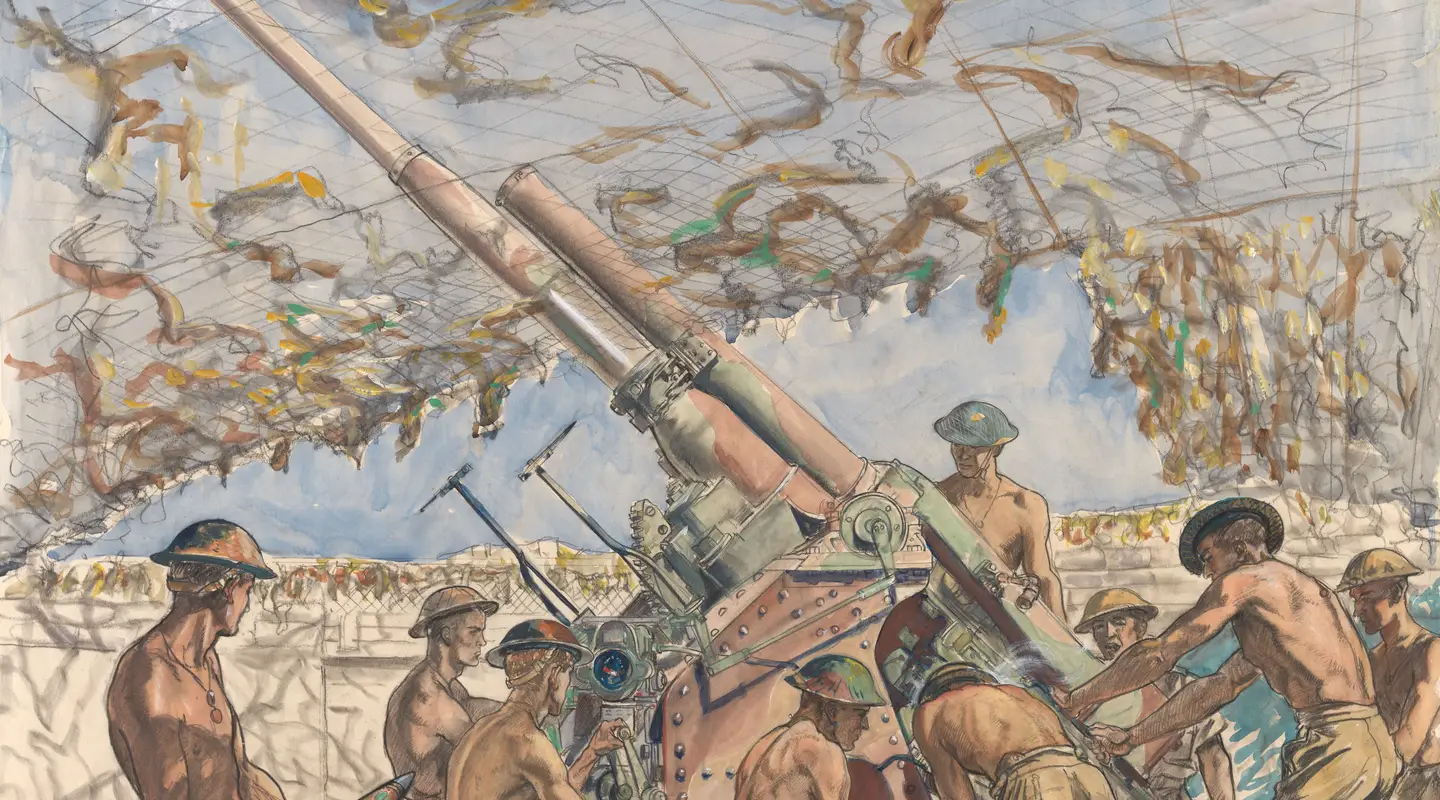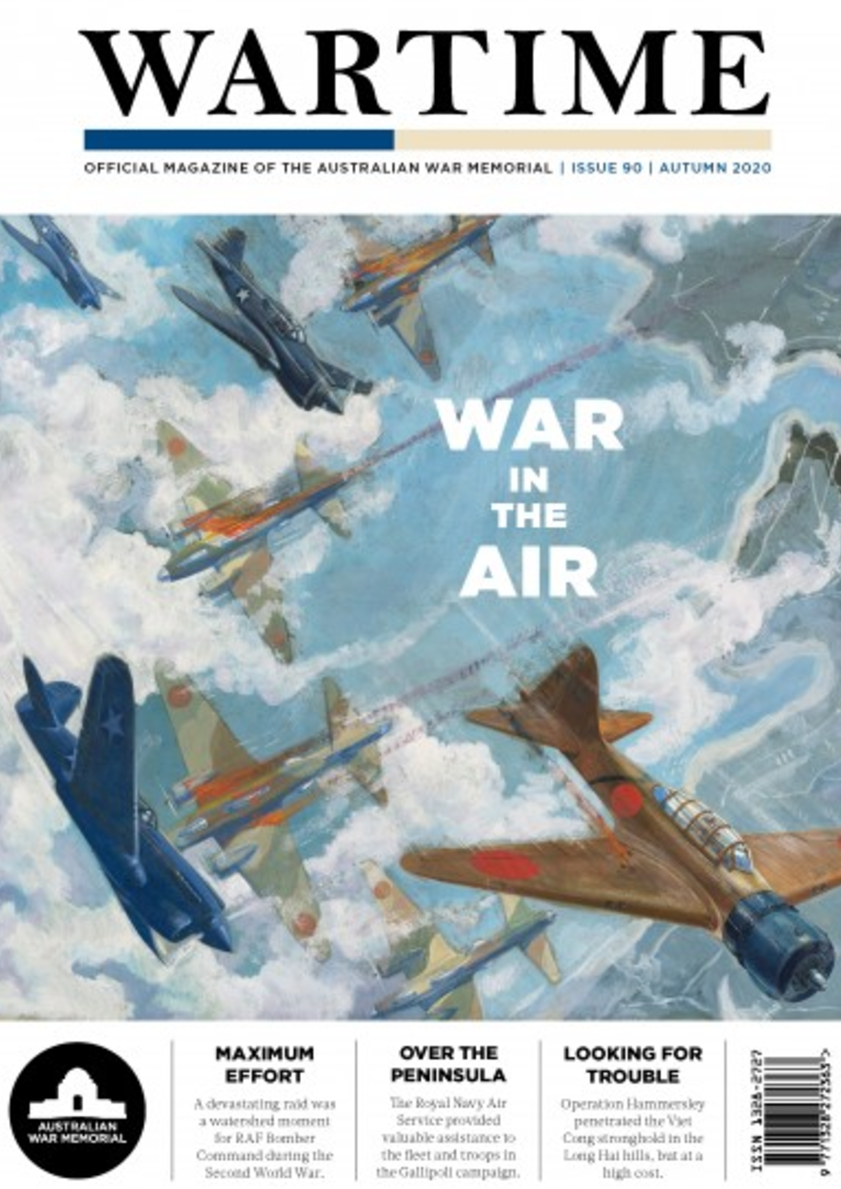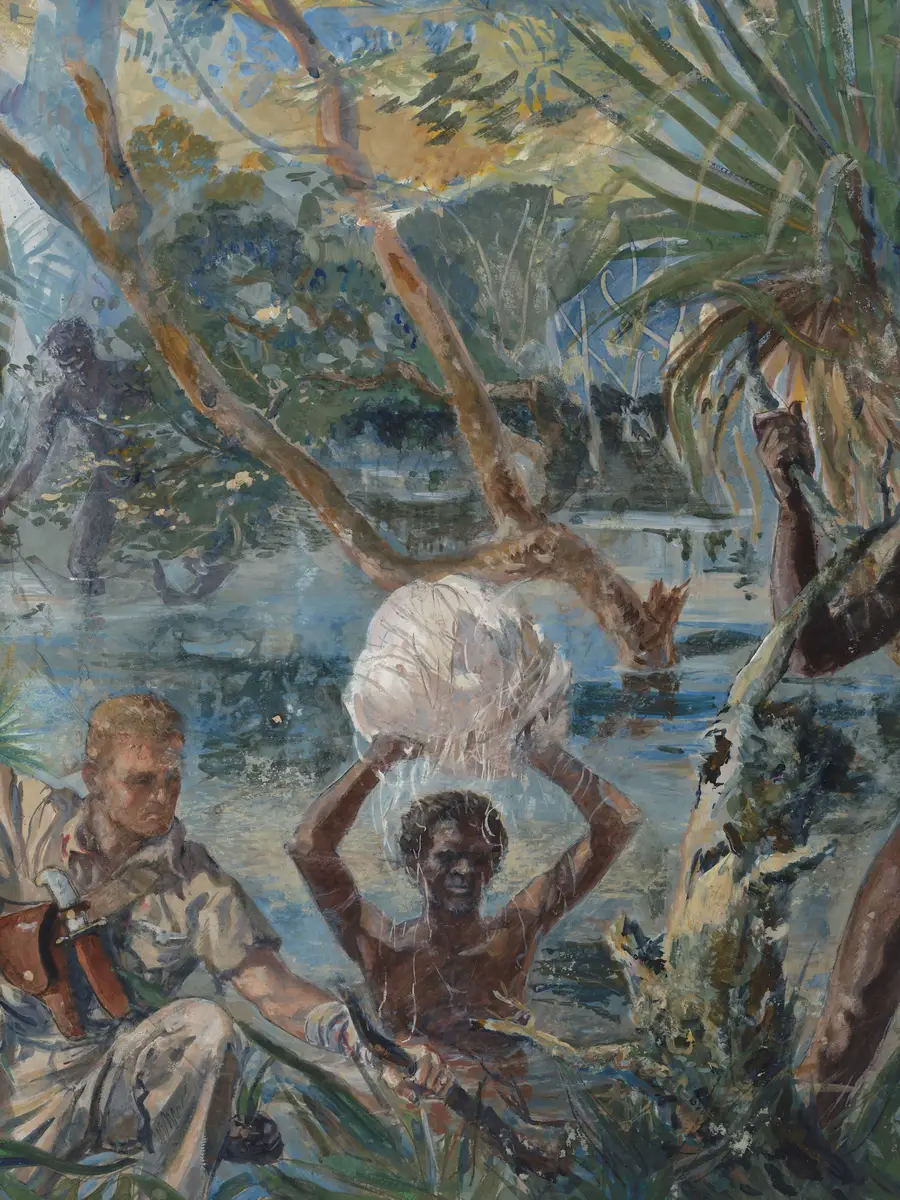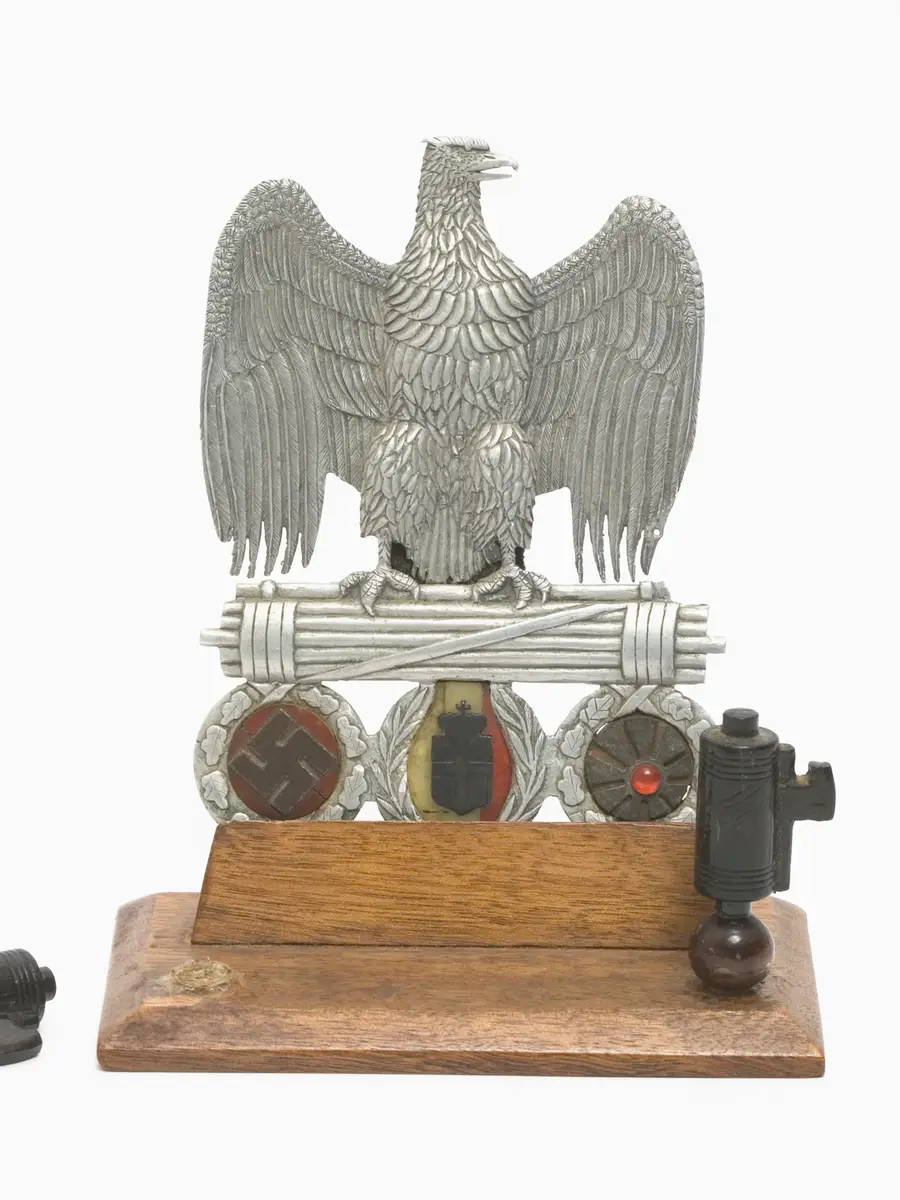A successful Japanese raid caught the Allied forces unprepared.
On the morning of 19 February 1942 the port, town and airfield of Darwin suffered devastating bombing attacks by Japanese aircraft. Flying from four Japanese aircraft carriers, 188 aircraft carried out the first raid, and 54 aircraft from airfields in Ambon and Celebes conducted a second raid. The official inquiry into the bombing found that the attacks killed 243 Allied service personnel and civilians, and wounded more than 300.
Darwin’s authorities were taken by surprise. Just before 9.40 am, a Catholic missionary on Bathurst Island sent a message reporting a large number of aircraft heading towards Darwin. Thinking the planes could be American, and not wanting to cause a false alarm, the station commander in Darwin did not sound the alert until just before 10 am, by which time the bombing had almost begun. One evacuated resident reported that “the first bomb fell before even the alert had finished.”
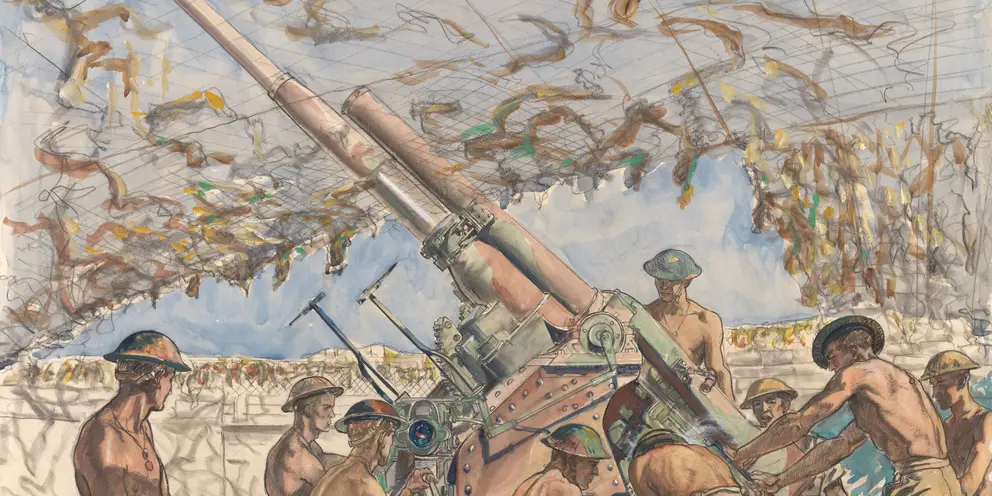
Roy Hodgkinson, 14 Australian Anti-aircraft Battery (Militia) Fixed Defences, Darwin (1942)
With the outbreak of war in the Pacific, Darwin’s port and airfield facilities had been developed, and the town was used as a base for deploying forces for the defence of Allied holdings in the south-west Pacific. The bombing of Darwin came towards the end of a series of stunning Japanese victories in the Netherlands East Indies and Malaya, including the fall of Singapore.
Over the next 20 months northern Australia endured 97 air raids, from Exmouth in the west to Townsville in the east. The final attack occurred on 12 November 1943 on Batchelor, 150 kilometres south of Darwin, but enemy air reconnaissance over the region continued through much of 1944. These raids disrupted the operation of Darwin’s port facilities, and tied up anti-aircraft defences and air force units that could have otherwise been sent to more forward areas.
These images show aspects of the air war over northern Australia that began on 19 February 1942. They include artwork by Captain Roy Hodgkinson of the Military History Section, who had been an accomplished illustrator before the war, and became an official war artist in February 1942.
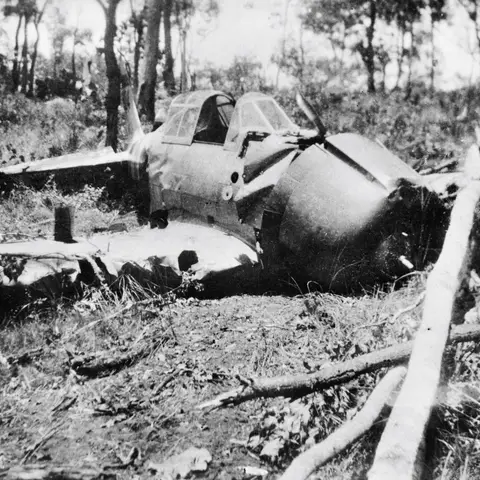
This Imperial Japanese Navy Mitsubishi A6M Zero fighter aircraft, piloted by Sergeant Toyoshima Hajime, crash landed on Melville Island.
Tiwi Islander Matthias Ulungura disarmed and captured Toyoshima, the first Japanese prisoner to be taken on Australian soil.
His aircraft was the first Zero captured by the Allies. Toyoshima was later a ringleader in the August 1944 breakout from Cowra prisoner of war camp,
during which he died. 27 February 1942.
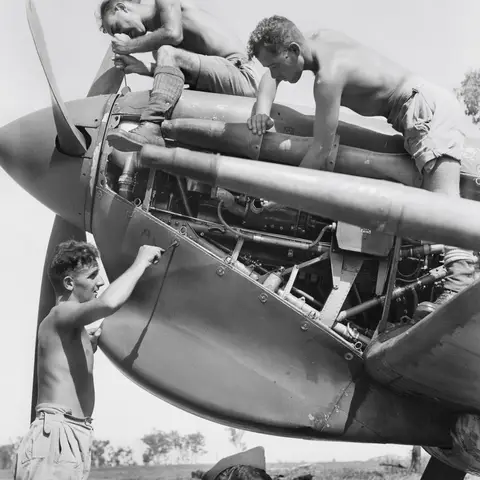
Ground crew checking the engine of a Supermarine Spitfire aircraft of No.54 Squadron, RAF. Darwin Mary 1943.
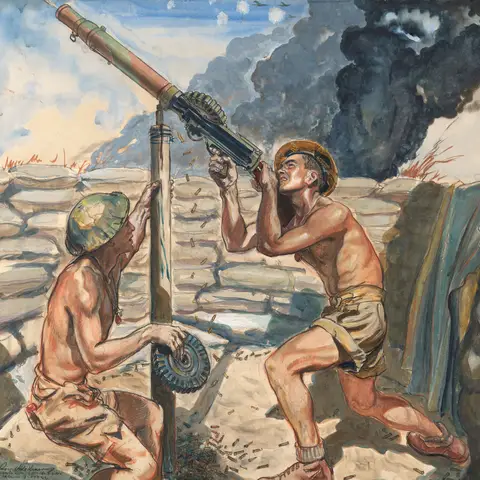
Roy Hodgkinson, Lewis gun attached to 14 Australian Anti-Aircraft Battery, Darwin (gunner Tommy Hill and Gunner Neil Cook) 1942
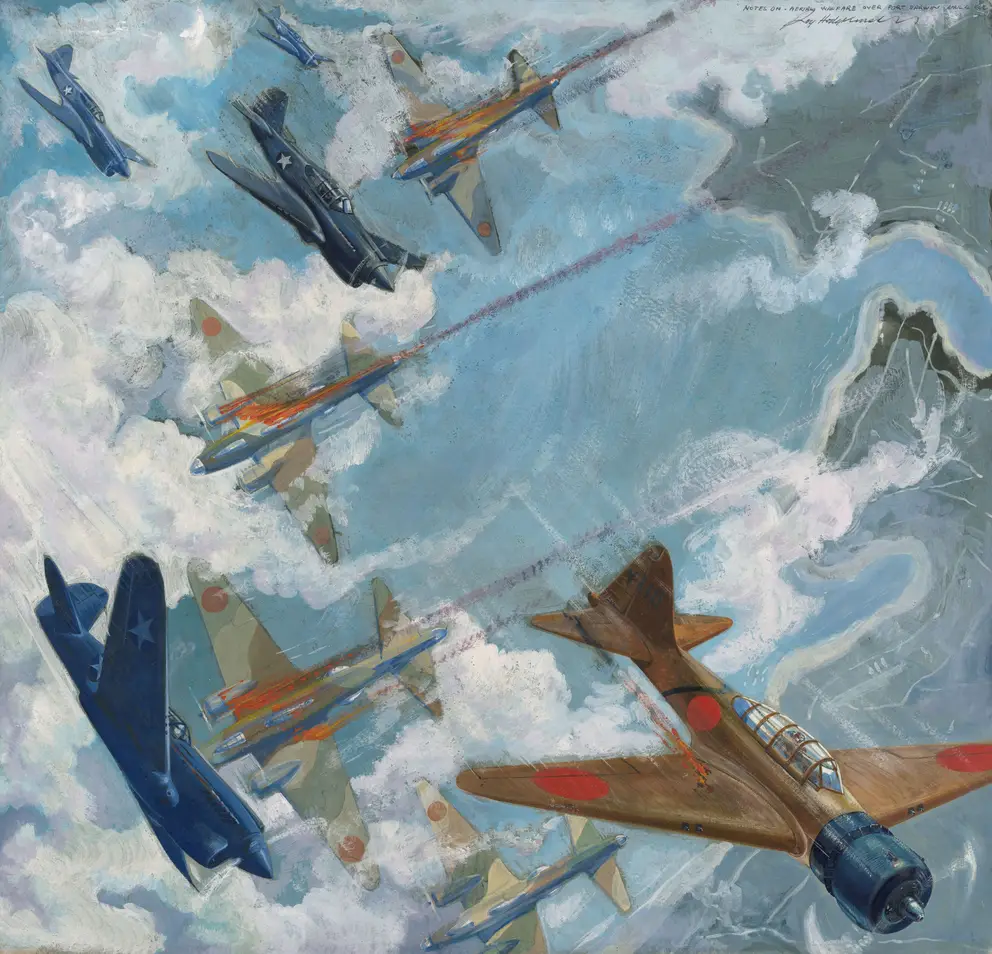
Roy Hodgkinson, Notes of aerial warfare over Port Darwin, 4th April 1942, 1942
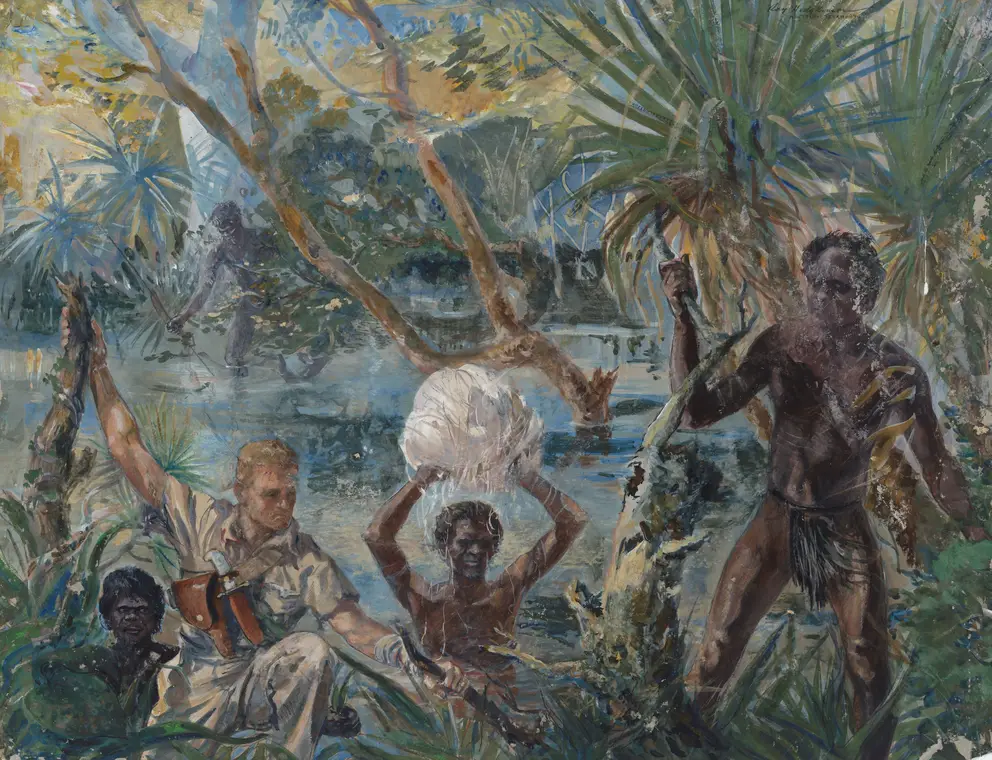
Roy Hodgkinson, Americans and Aborigines 1942. The painting depicts the story associated with the rescue of 2nd Lieutenant Clarence T Johnson, 7th Squadron, 49th Fighter group, USA.
Roy Hodgkinson
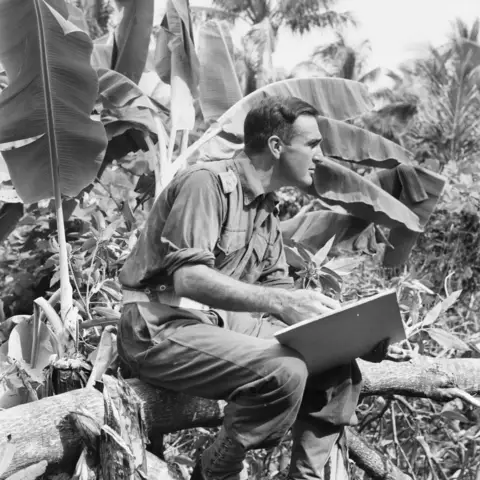
Captain Roy Hodgkinson, an official war artist, working in New Guinea, March 1944. Photographer: Norman Stuckey
Born in Sydney in 1911, Roy Cecil Hodgkinson trained as an illustrator and cartoonist before becoming an official war artist in 1942.
He travelled widely, recording the war in northern Australia, New Guinea, India, Ceylon and Burma. His scenes of northern Australia, mostly of Darwin, included graphic drawings of the Japanese raid on Darwin in 1942 and the raid's aftermath.
He depicted Australian gunners, bomb damage to buildings and ships, and Japanese aircraft that had been shot down.
Hodgkinson also drew the troops at rest and play, including fights in the canteen between men, smokos and the troops travelling.
His brother, Frank George Hodgkinson, served in the Middle East and the Pacific during the Second World War. He sketched and painted the men and activities around him, and in March 1945 was also appointed an official war artist.
